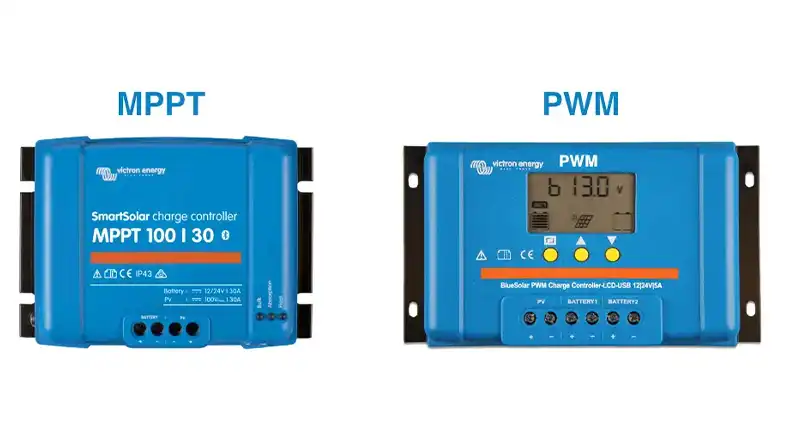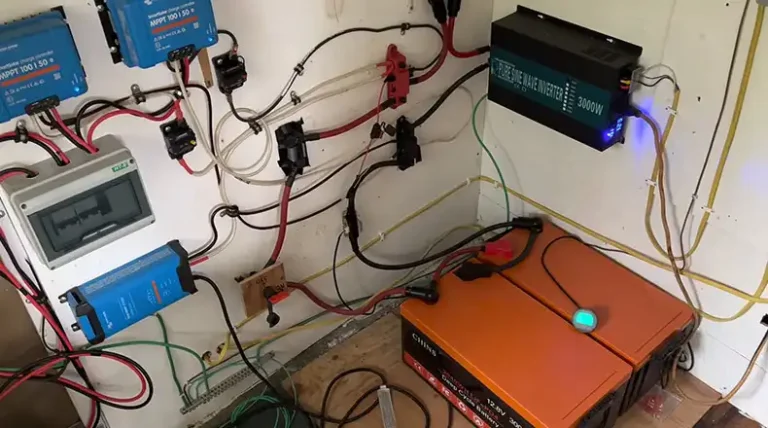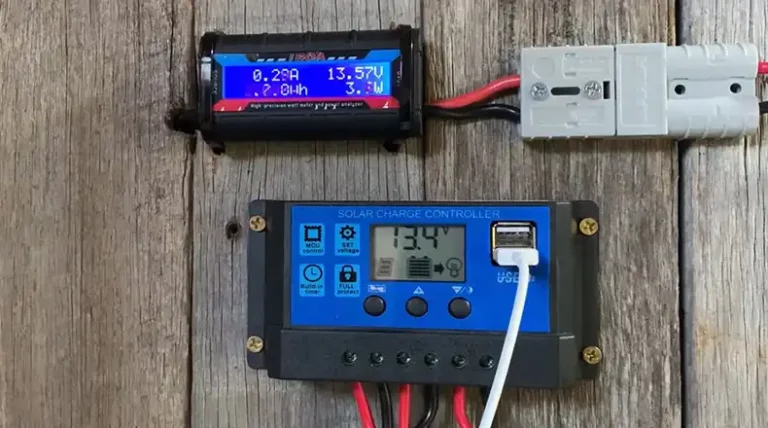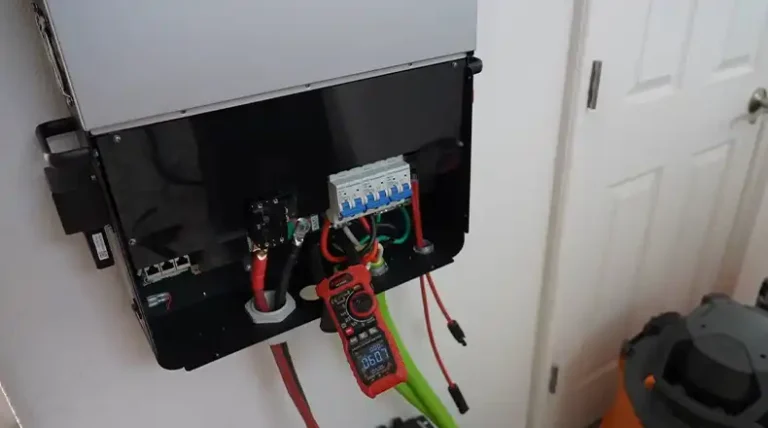Do I Need a PWM or MPPT Solar Charge Controller?
If you’re setting up a solar power system, one of the crucial components you’ll need is a solar charge controller. This device sits between your solar panels and battery bank, regulating the flow of electricity to prevent overcharging and potential damage to your batteries. But the two main types, PWM (Pulse Width Modulation) and MPPT (Maximum Power Point Tracking) have distinct characteristics that make them suitable for different solar setups.
In this article, we’ll talk about PWM and MPPT, helping you understand the pros and cons of each technology so you can make an informed decision for your specific needs.

Understanding PWM and MPPT Solar Charge Controllers
PWM (Pulse Width Modulation) Charge Controllers
A PWM controller is essentially an electronic switch that rapidly connects and disconnects the solar panels from the battery bank. When the battery voltage drops below a set point, the controller connects the panels to initiate charging. As the battery approaches full charge, the controller starts pulsing the connection on and off to regulate the flow of electricity and prevent overcharging.
PWM controllers are relatively simple in design and are generally less expensive than MPPT controllers. They work well in situations where the solar panel’s maximum power voltage (Vmp) is only slightly higher than the battery bank voltage, typically within a 6-volt difference.
MPPT (Maximum Power Point Tracking) Charge Controllers
Unlike PWM controllers that operate at battery voltage, MPPT controllers continuously adjust their internal impedance to match the solar array’s maximum power point, allowing them to extract the highest possible power from the panels at any given moment.
MPPT controllers are more complex and expensive than PWM controllers, but they offer a significant advantage in energy harvest, especially when there’s a larger voltage differential between the solar array and the battery bank. They can also maintain high efficiency under non-ideal conditions.
Here’s a quick comparison of the key features:
| Feature | PWM Controller | MPPT Controller |
| Efficiency | Lower, typically 75-80% | Higher, up to 95-98% |
| Cost | Lower upfront cost | Higher upfront cost |
| Typical Solar Array Voltage Range | Close to battery voltage | Can handle a wide range |
| Performance in Varying Conditions | Consistent in ideal conditions, degrades in non-ideal conditions | Maintains high efficiency in non-ideal conditions |
Voltage Ranges for PWM vs. MPPT
While there’s no hard and fast rule, here are some general guidelines for choosing between PWM and MPPT based on the solar array and battery bank voltages:
PWM controllers are generally recommended when:
- 12V Battery: Solar panel Vmp is between 17-19V
- 24V Battery: Solar panel Vmp is between 30-34V
- For higher voltage battery banks, keep the panel Vmp within approximately 6V above the battery voltage
MPPT controllers are generally recommended when:
- 12V Battery: Solar panel Vmp is greater than 19V
- 24V Battery: Solar panel Vmp is greater than 34V
- For any solar array voltage higher than the PWM range listed above
Benefits of Using an MPPT Controller
While MPPT controllers come with a higher upfront cost, they offer several significant advantages that can translate into long-term energy and cost savings:
Increased Energy Harvest Potential
MPPT controllers can extract up to 25% or more power from your solar panels compared to PWM controllers, especially when there’s a large voltage differential between the array and battery bank. This increased energy harvest can lead to faster charging times and higher overall system efficiency.
Maximized Output in Non-Ideal Conditions
MPPT controllers excel in situations where PWM controllers may struggle to perform optimally, such as:
- High-Voltage Solar Arrays: MPPT controllers can handle higher voltages from “residential” solar panels, allowing you to take advantage of their increased power output.
- Colder Climates: Solar panel efficiency decreases in colder temperatures, but MPPT controllers can compensate for this and extract the maximum available power.
- Partially Shaded Panels: MPPT controllers can bypass shaded panels in an array, maintaining overall output, whereas shading can significantly impact PWM controller performance.
Flexibility in System Design
With their ability to handle a wide range of solar array voltages, MPPT controllers give you more flexibility in designing your solar system. You can mix and match different panel types or configurations without being limited by the battery bank voltage.
Benefits of Using a PWM Controller
While MPPT controllers offer superior energy harvest and performance, PWM controllers still have their place, especially in smaller solar setups or when cost is a primary concern. Here are some advantages of using a PWM controller:
Lower Upfront Cost
PWM controllers are generally less expensive than MPPT controllers, making them a more budget-friendly option for smaller or cost-sensitive projects.
Simplicity
PWM controllers have a simpler design and fewer components, which can translate into higher reliability and easier maintenance.
Suitable for Smaller Systems
For smaller solar setups, such as RVs, boats, or off-grid cabins, the efficiency gains of an MPPT controller may not justify the additional cost. PWM controllers can be a cost-effective solution in these cases.
Warmer Climates
PWM controllers perform well in warmer climates where solar panel efficiency is less affected by temperature fluctuations.
Low-Voltage Differential
If your solar panel’s maximum power voltage (Vmp) is just slightly above the battery bank voltage, a PWM controller can provide adequate performance without the added complexity and cost of an MPPT controller.
So Which Solar Charge Controller Do You Need?
To help you decide between a PWM or MPPT solar charge controller, consider the following factors:
- System Size and Budget: For smaller systems or tight budgets, a PWM controller may be sufficient. For larger setups or when maximum energy harvest is crucial, an MPPT controller is generally worth the investment.
- Solar Array Specifications: Check the solar panel’s Vmp (maximum power voltage), Voc (open-circuit voltage), and Isc (short-circuit current) to ensure compatibility with the charge controller you choose.
- Battery Bank Voltage: Refer to the voltage ranges outlined earlier to determine if a PWM or MPPT controller is better suited for your battery bank voltage.
- Geographic Climate: MPPT controllers may be preferable in colder climates or areas with significant temperature swings, while PWM controllers can be a good choice in consistently warm regions.
- Potential for System Expansion: If you anticipate expanding your solar system in the future, an MPPT controller can provide more flexibility and scalability.
Determining Charge Controller Type for Your Situation
Here’s a simple decision-making process to help you choose:
To determine if you need a PWM, MPPT, or boost solar charge controller, compare your solar panel’s maximum power voltage (Vmp) to your battery bank voltage.
- If the panel’s Vmp is greater than 19V for a 12V battery, 34V for a 24V battery, or higher than the typical PWM voltage range for other battery voltages, an MPPT controller will provide the highest performance.
- If the panel’s Vmp falls within the range of 17-19V for a 12V battery, 30-34V for a 24V battery, or around 6V above the battery voltage for other voltages, a PWM or MPPT controller will have similar performance.
However, if the panel’s Vmp is less than 13V for a 12V battery, 26V for a 24V battery, or lower than what is suitable for your battery bank voltage, a boost controller must be used.
PWM vs MPPT: Performance Comparison
Let’s consider a hypothetical scenario to illustrate the potential energy harvest difference between PWM and MPPT controllers.
Scenario: A solar array with a Vmp of 36V and an Imp (maximum power current) of 8A is connected to a 12V battery bank.
With a PWM controller:
- The array will operate at the battery voltage of 12V.
- The current will be limited to approximately 12V / 36V * 8A = 2.67A.
- The power output will be 12V * 2.67A = 32W.
With an MPPT controller:
- The controller will adjust to the array’s maximum power point of 36V and 8A.
- The power output will be 36V * 8A = 288W.
In this scenario, the MPPT controller would provide a staggering 800% more power output compared to the PWM controller, highlighting the significant energy harvest advantage in systems with a large voltage differential.
PWM vsMPPT: Cost-Benefit Analysis
While MPPT controllers have a higher upfront cost, their increased energy harvest can translate into substantial long-term savings and a faster return on investment (ROI). Here’s a simplified cost-benefit analysis:
| Controller Type | Approximate Cost | Energy Harvest (kWh/year) | Electricity Cost Savings ($/year)* |
| PWM (e.g., 30A) | $50 | 500 | $75 |
| MPPT (e.g., 30A) | $150 | 650 | $97.50 |
*Assuming an electricity rate of $0.15/kWh.
In this example, the MPPT controller’s additional energy harvest of 150 kWh/year would result in $22.50 more in yearly electricity cost savings, potentially recovering the higher upfront cost within a few years.
Final Words
Choosing between a PWM or MPPT solar charge controller involves weighing factors like system size, voltage differential, geographic climate, budget, and potential for future expansion. While PWM controllers are a cost-effective option for smaller systems or tight budgets, MPPT controllers offer superior energy harvest, efficiency, and flexibility, making them a worthwhile investment for larger setups or situations with significant voltage differences.






